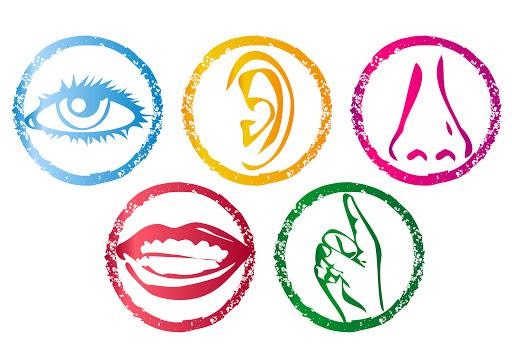A self-soothe sensory box is something that is used to ground you in the here-and-now, to relax you, and to help when feeling stressed, anxious or low.
The box is a really individual thing and needs to be created by you, for you. Creating the box can be an activity in itself that can help you to feel good, and should change over time as things lose their usefulness and as you find other things that can help.
Which box?
We call this a self-soothe sensory box but it doesn’t actually have to be a box, it can be anything that is able to hold things. This might be a small, plain cardboard shoe box, it could be a nice decorative box you have, or could be some type of bag or other container.
If you choose an undecorated box or bag, one thing you can do is decorate it in a way that makes it feel something made for you. Try to make it nice to look at and aim for something that feels personal and comforting.
Some people have a larger box that they store at home, and then have a smaller version that they can take out with them when they go out somewhere to help with grounding them.
Appealing to the senses:
Our senses are powerful, they connect us to our surroundings and to memories and emotions. Appealing to just one of our senses can either focus us on the present or send us back into a memory.
This box is designed to ground you and help you to feel calmer. By including things that appeal to each of your senses, we can improve the likelihood that this will help. When you are adding to this box, try to keep in mind the emotion you are trying to evoke- aim for things that remind you of calmness and happiness.
It might take some time to find things that you feel strongly about when it comes to your senses and it takes a lot of trial and error so keep a look-out for things you would like to try and touch them, smell them, listen to them, until you find some that help you to feel this sense of calm and happiness.

Vision: to your sense of sight can involve putting things attached to specific memories or important people in your life (such as photos of family/friends/pets) or it can just involve putting pictures, colours, or items in the box that you find calming or soothing. You can even include something visual that is an activity to focus on, such as a colouring book or puzzle that grounds you in the moment. You can include reminders of a place you feel safe and relaxed too, which can be used in some visualisation exercises too if you find these helpful to use.
Hearing: We all respond to different sounds. Some people find putting a reminder of a favourite playlist in here can help, for others it might involve a relaxation or white noise player. It can also help to include things that produce a noise you like, such as bubble wrap or an instrument if you enjoy playing music. Podcasts and audiobooks can be mentioned in here to prompt you to listen to these if they usually help. Remember to aim for the sounds that fill you with that sense of calmness or happiness you are looking for.
Smell: A scent can be really powerful in triggering emotions and memories so this is usually one of the senses that takes a lot of trial-and-error to find something you connect with. Perfumes, essential oils, pillow sprays, scented candles or diffusers can all be really helpful sources to appeal to your sense of smell. Remember to go out and smell different things to find the ones that work best for you. If you keep the smell quite simple and use it consistently when you are trying to relax, your body can even learn to associate this smell with relaxation.
Taste: Taste is a really good sense to bring you into the here-and-now when you are getting lost in the past or thinking too much about the future. Strong tastes can be helpful for this in particular. You might put things in your box like chewing gum, sweets to suck on, chocolate, or herbal tea bags.
Touch: Try to include different textures and items that encourage your body to relax or feel comforted. Some people find certain textures interesting or comforting, and others need to do something with their hands to calm themselves and so need something they can actively use. Some examples of things to include here for this sense are; tangles, fidget cubes, smooth stones, hand creams, fluffy socks, playdough, bumpy fabrics, stress balls, and foot masks.
Appealing to the senses:
In addition to things that appeal to the senses, it can be helpful to add other things into your self-soothe sensory box. Remember, the aim of this box is to help you when you are feeling low or anxious or need grounding. This means it is helpful to try to include anything you might need in a crisis or when you aren’t feeling good, such as;
- Safety plan: If you experience thoughts of suicide, you will hopefully have a safety plan that reminds you what to do if the thoughts get more intense. This is a good place to store your safety plan as hopefully items that are on the safety plan are in the box too.
- Feel-good things: If you have any nice messages from friends/family about yourself, or you do keep things like gratitude journals or note down positive achievements, keeping these in your self-soothe sensory box can give you a little reminder of these things when feeling upset or anxious.
- Notepad and pen: Sometimes, it can help to write things down to help you to process them or get things off your chest. Having something to hand to do this can be really helpful. You can also draw things in the notepad too, and having things written down can be helpful if you have a therapist or counsellor as you can take some of the notes with you to a session to explain how you were feeling in that moment.
- Numbers for help: Sometimes, helplines and text services can help when feeling overwhelmed if you need someone to talk to. You can keep a list of ones to try in this box and use them when you need them. If you don’t find one of them helpful, you can cross that one out and try a different one next time.
- Activities that you find calming: You can put favourite books, games, or anything else you know helps you when feeling overwhelmed. This way, you just need to open your box when feeling this way and you will instantly remind yourself of what you can do to help yourself. This is particularly important as we often don’t remember what to do when overwhelmed. If the activities themselves don’t fit in the box, write out a list of what you can try and stick it on the top of your box.
- Anything you like: If it is associated with calming, the here-and-now, or happiness, add it in! The same goes if it helps you to feel safe and supported and if it is a reminder of how to help yourself when you are feeling overwhelmed.
Remember, this box is just for you and your needs will change over time. Don’t be afraid to take out things that stop helping and keep looking out for new things to add.

